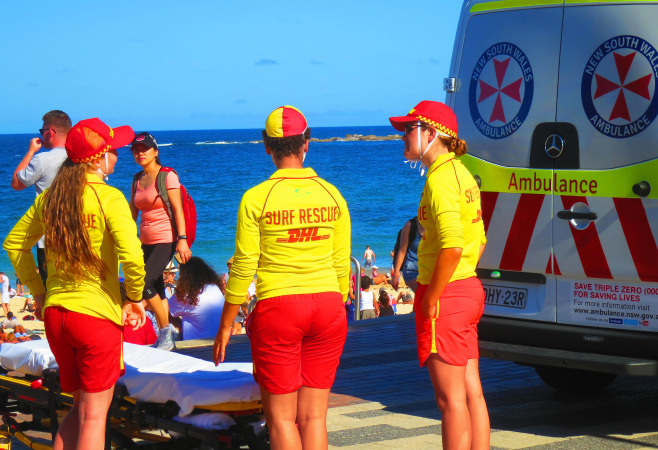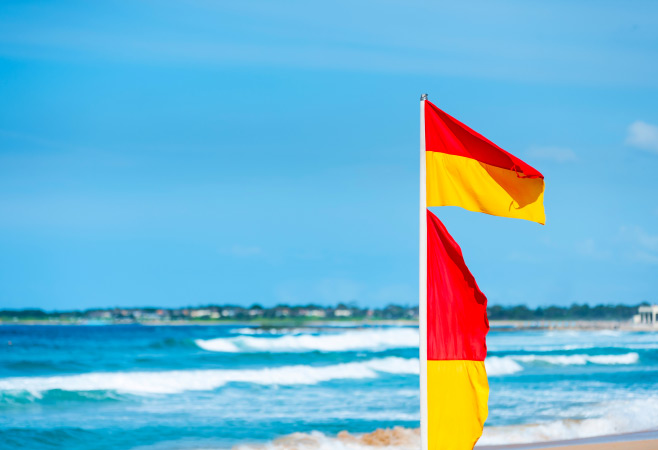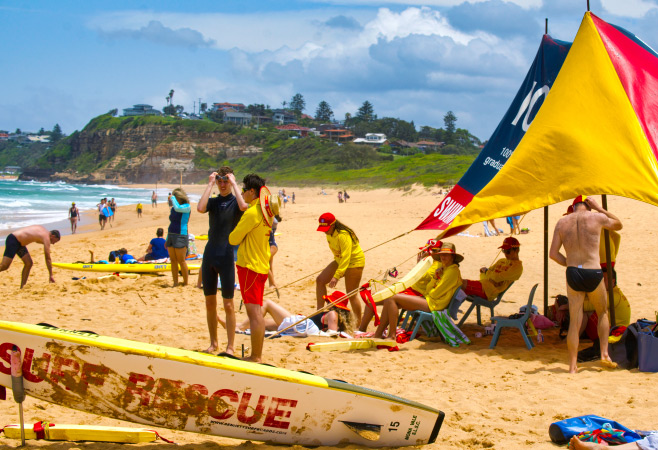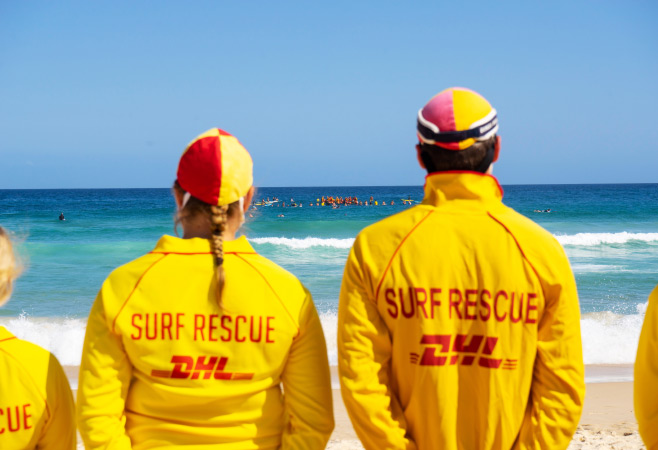Guardians of the Coast: My Personal Experience with Australia Surf Life Saving Culture
As someone who’s surfed across continents, from the reef breaks of Indonesia to the chilled beach towns of Portugal, I’ve come to truly appreciate one thing more than perfect swell: feeling safe in the water. And nowhere in the world is that safety more deeply woven into the surf culture than in Australia. That’s thanks to the extraordinary community known as Surf Life Saving Australia (SLSA).
If you're new to Aussie beaches, this movement may just look like fit folks in red and yellow uniforms blowing whistles. But once you’ve spent time along this coastline — whether paddling out in Byron Bay or diving through shorebreaks in Cottesloe — you realize it’s so much more than that.
- What Is Surf Life Saving Australia (SLSA) and Why It’s So Much More Than Lifeguards on Patrol
- The Red and Yellow Flags: What They Really Mean for Surfers and Swimmers
- Surf Life Saving Clubs: The Beating Heart of Beach Communities
- Nippers: Australia’s Surf Safety School for Kids (and a Joy to Watch)
- Rescues, Realities, and Today’s Challenges
- How to Engage With Surf Life Saving as a Traveler or Surfer
- Final Thoughts: Surf Life Saving Australia (SLSA) Is a Culture of Courage and Care
What Is Surf Life Saving Australia (SLSA) and Why It’s So Much More Than Lifeguards on Patrol
To the outsider, “surf life saving” might seem like a government safety service. But in reality, Surf Life Saving Australia (SLSA) is a grassroots, community-led movement built around ocean safety, rescue training, youth development, and genuine surf culture.
Founded in the early 1900s, it was born from the growing popularity of beach swimming and surfing — and the need to protect people unfamiliar with Australia’s famously rough surf. Today, the Surf Life Saving network operates across more than 300 clubs nationwide, from remote WA beaches to iconic hotspots like Bondi and Noosa.
What struck me most when I arrived in Australia wasn’t just how many beaches had patrolling lifesavers — it was how involved local communities were. These weren’t just professionals. They were volunteers, often teenagers and retirees, giving up their weekends to make sure people like me didn’t get into trouble in unfamiliar rips.
 Surf Life Saving Australia (SLSA)
Surf Life Saving Australia (SLSA)
The Red and Yellow Flags: What They Really Mean for Surfers and Swimmers
If you’ve been to any beach in Australia, you’ve seen them — two red and yellow flags planted in the sand, marking the safest zone to swim. These aren’t decorative. They're the front lines of Australia surf life saving operations.
As a surfer, I often paddle out outside the flags — where the waves break better — but I still rely on the presence of lifesavers. On days when the swell shifts or unexpected currents roll through, they’ve been the ones warning me, offering advice, or simply keeping a watchful eye from their raised towers.
For swimmers, especially tourists or new migrants, the flags are essential. During my time volunteering with a community surf education program in Victoria, I saw firsthand how many lives those guidelines have saved — not by dramatic rescues, but by quiet prevention.
 The Red and Yellow Flags: What They Really Mean for Surfers and Swimmers
The Red and Yellow Flags: What They Really Mean for Surfers and Swimmers
Surf Life Saving Clubs: The Beating Heart of Beach Communities
I’ll never forget my first visit to a local surf life saving club in Yallingup. It was buzzing. Groms were doing beach sprints, older members were running drills with rescue tubes, and parents were cooking sausage sizzles to raise funds. There was no pretense — just purpose.
Clubs like these are where generations of Australians learn not just how to swim, but how to read the ocean, perform CPR, respect marine life, and care for one another. From the outside, Surf Life Saving Australia (SLSA) looks like a service — but inside, it’s a lifestyle.
If you’re staying by the coast for a while, I highly recommend visiting a local club or even joining a training session. You’ll come away with more than knowledge — you’ll feel connected to the ocean in a whole new way.
 Surf Life Saving Clubs: The Beating Heart of Beach Communities
Surf Life Saving Clubs: The Beating Heart of Beach Communities
Nippers: Australia’s Surf Safety School for Kids (and a Joy to Watch)
One of my favorite parts of early morning beach walks in Australia? Watching Nippers. These are surf life saving programs for kids — think junior lifesavers aged 5 to 13 learning ocean safety, board paddling, rescue techniques, and beach sports.
On a trip to the Sunshine Coast, I stopped to watch a Nippers event and ended up staying for hours. The energy was infectious. These kids weren’t just playing — they were building skills and awareness that would serve them for life, on and off the sand.
From a cultural point of view, Nippers is a key part of what makes Australia’s beach lifestyle so sustainable. It builds respect for the ocean from the earliest age. And trust me, you feel better paddling out knowing those kids will be leading rescue teams one day.
 Nippers: Australia’s Surf Safety School for Kids (and a Joy to Watch)
Nippers: Australia’s Surf Safety School for Kids (and a Joy to Watch)
Rescues, Realities, and Today’s Challenges
While many encounters with surf lifesavers are casual — a friendly wave, a tip about tide direction — the truth is, these volunteers face serious, often dangerous situations.
Current statistics show over 10,000 rescues are performed annually by Surf Life Saving Australia (SLSA) members. And those numbers are rising as beachgoer numbers increase. I once watched a helicopter-assisted rescue unfold in Margaret River when a swimmer got caught in a rip too far from the flags. Within minutes, lifesavers, paramedics, and surf rescue boats were deployed — calm, professional, and impressively fast.
Yet, challenges remain. Funding, training capacity, and growing tourist numbers mean the system is stretched. The community model still holds strong, but it needs support — especially from those who enjoy the beach and can give back, even in small ways.
How to Engage With Surf Life Saving as a Traveler or Surfer
If you’re just passing through, your engagement might be as simple as:
- Always swimming between the red and yellow flags
- Reading surf condition boards posted at beach entrances
- Thanking a patrolling lifesaver for their service
But if you’re staying longer, you can:
- Attend a community safety talk
- Volunteer at a club event
- Donate or sponsor gear for local programs
- Join a Bronze Medallion course (the gold standard for surf lifesavers)
As a surfer, it’s easy to paddle out and forget what’s happening on shore. But remembering the role of Surf Life Saving Australia (SLSA) deepens your connection to the beach — and strengthens the culture that supports it.
 How to Engage With Surf Life Saving as a Traveler or Surfer
How to Engage With Surf Life Saving as a Traveler or Surfer
Final Thoughts: Surf Life Saving Australia (SLSA) Is a Culture of Courage and Care
At its core, Surf Life Saving Australia (SLSA) isn’t just about rescue. It’s about education, community, courage, and ocean stewardship. It’s the spirit of the beach made visible — and audible in every whistle, every call to “swim between the flags,” and every hand pulling a struggling swimmer back to safety.
Whether you're riding barrels or wading in the shallows, knowing that someone’s watching over the waves changes how you experience the ocean. It makes you feel seen, safe, and connected.
And if you’re planning a trip to Australia’s world-famous beaches, don’t forget your travel paperwork. Australian Immigration Services can help streamline your ETA or eVisitor visa process, so you can focus on soaking in sun, salt, and surf — safely.
Related Articles
- Things to Do in Sunshine Coast, Australia: Your Ultimate Guide to Queensland's Hidden Paradise
- Hot Air Balloon Ride Melbourne: Your Ultimate Guide to Floating Above Australia's Cultural Capital
- Things to Buy in Gold Coast: Your Ultimate Guide to Australia's Beach Paradise Shopping
- Things to Buy in Cairns: Your Ultimate Guide to Tropical Treasures and Unique Australian Souvenirs
HOW CAN WE HELP?
APPLY WITH CONFIDENCE
|










